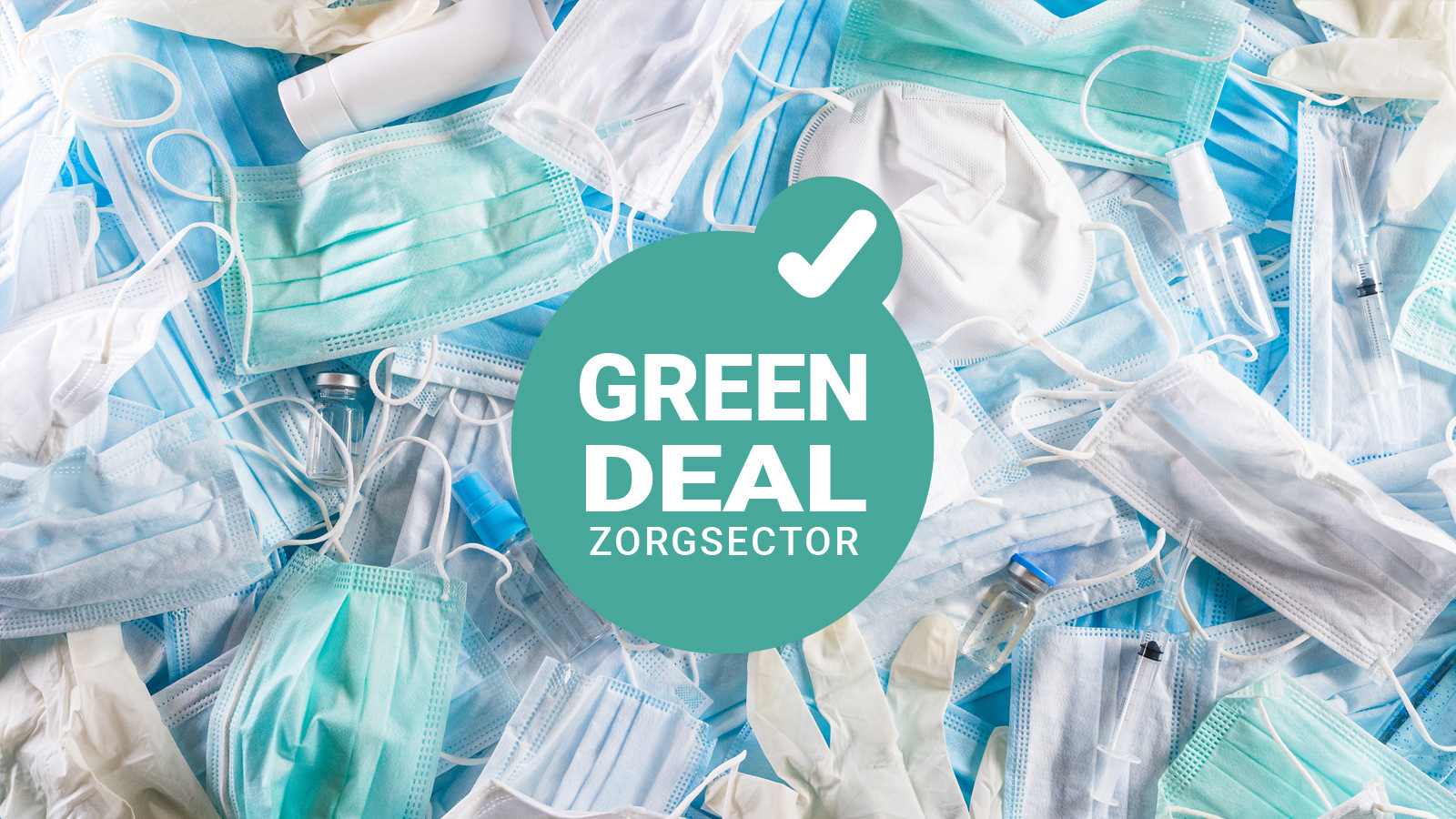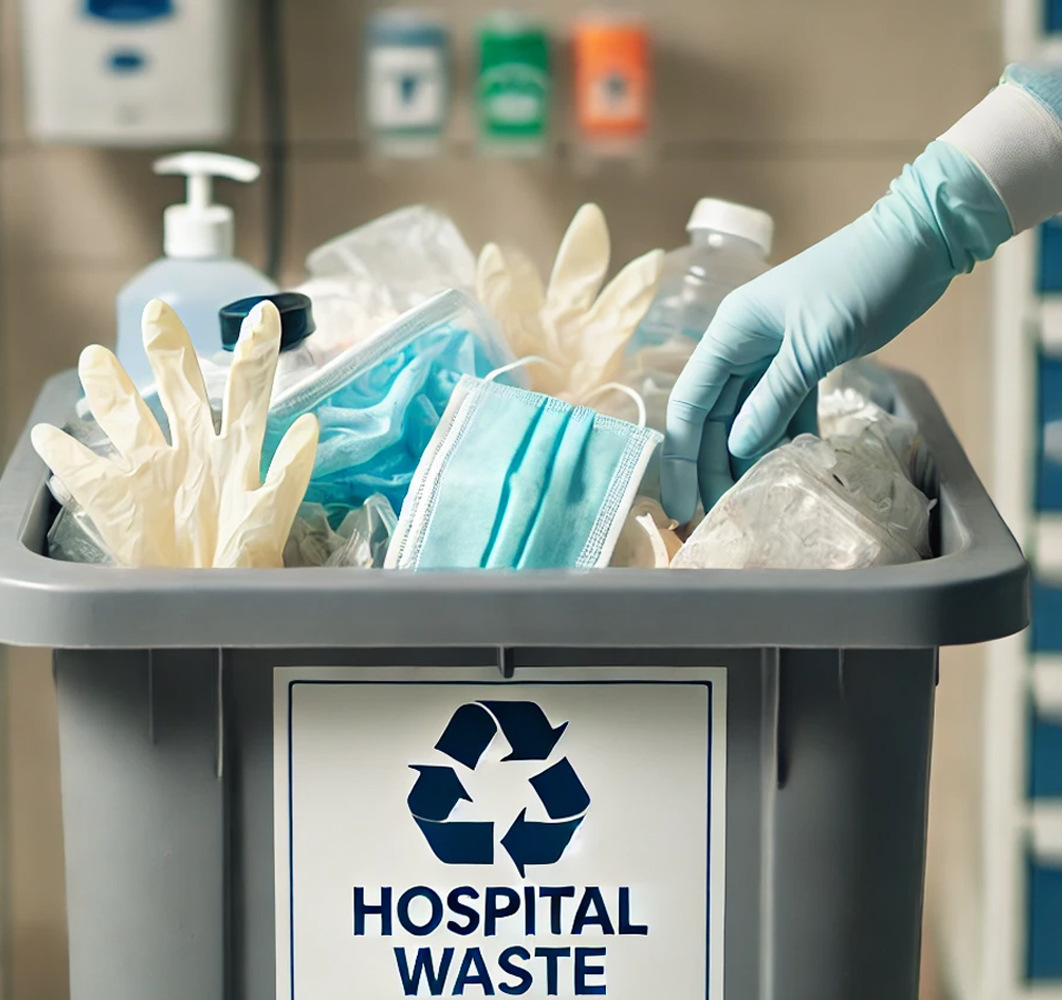Hospital waste, such as medical waste and packaging materials, is a major contributor to CO2 emissions in the Netherlands, as much of this waste ends up in incinerators. By better separating hospital waste, processing it and reusing materials, the environmental impact can be significantly reduced.
Green Deal Care contributes to making the healthcare sector more sustainable and thus to the Netherlands' climate goals. Version 3 has now been introduced, but what are the main differences from the previous versions? In this blog we take you through them. From the first steps in raising awareness of sustainability to the concrete goals of Green Deal Care 3.0.
Green Deal 3.0: what preceded it
The Green Deal Care is an initiative of the Dutch government, in cooperation with healthcare institutions, sector organizations and social partners, with the aim of making the healthcare sector in the Netherlands more sustainable. It encourages collaboration between healthcare institutions, the government and other stakeholders to jointly achieve sustainability goals and reduce the sector's ecological footprint.
Green Deal Care1.0 was introduced in 2015 by the Ministry of Infrastructure and Water Management, together with healthcare institutions and industry associations. The focus was on creating awareness and launching sustainability initiatives. It was the starting point for collaboration between healthcare institutions, governments and other stakeholders to reduce the sector's carbon footprint.
Due to the need for further sustainability in the healthcare sector and to make progress on the ambitions of the original Green Deal, Green Deal Care 2.0 was introduced in 2018. This built on the first deal with a broader and deeper approach. This specifically focused on themes such as CO2 reduction, circular working, reducing drug residues and promoting healthy living environments.
Main changes Green Deal Care 3.0 compared to 2.0
Green Deal Care 3.0 builds on the foundations of 2.0, but includes several important elements and objectives to help the healthcare sector become even more sustainable. Whereas Green Deal Zorg 2.0 focused mainly on establishing plans and raising awareness about sustainability, 3.0 takes it a step further by setting concrete, measurable goals. The ambition of 3.0 has been raised significantly with goals such as a 55% reduction in CO2 emissions by 2030 and achieving complete climate neutrality by 2050. This requires healthcare institutions to switch more quickly to renewable energy sources, increase energy efficiency, and contribute to the circular economy.
In addition, 3.0 puts a strong focus on circular healthcare, aiming for a 50% reduction in primary resource use by 2030. Whereas 2.0 focused mainly on the importance of reducing raw material use, 3.0 emphasizes reusing and recycling materials, closing cycles and maximizing waste. It also assigns a more prominent rol to health prevention, encouraging sustainable choices throughout the healthcare sector to not only treat health issues but also actively improve health.
We list the most important changes:
- Concrete sustainability goals: 55% reduction in CO2 emissions by 2030 and climate neutrality by 2050.
- Circular healthcare: Clearly measurable goals, such as a 50% reduction in primary resource use 2030.
- Health prevention: Greater focus on encouraging sustainable and healthy choices in the healthcare environment, such as providing organic plant-based foods and promoting active mobility, such as biking and walking.
- Climate adaptation: Increased focus on adapting healthcare facilities to the effects of climate change, such as installing energy-efficient ventilation systems.
The impact of Green Deal Care
The various versions of the Green Deal Care have had clear impacts on sustainability in the healthcare sector. We take you through the timeline and results.
Green Deal Care 1.0, introduced in 2015, laid the foundation for awareness and took the first steps toward sustainability in the healthcare sector. The biggest result of this first version was that many healthcare institutions began thinking about their carbon footprint and setting up sustainability initiatives. It sparked collaboration between healthcare institutions and other stakeholders.
Green deal 2.0, introduced in 2018, went a step further by formulating clear themes and action plans, such as CO2 reduction, circular working and reducing drug residues in the environment. As a result, measurable goals and action items were formed, making real progress. Many healthcare facilities have created CO2 reduction plans and there has been an increased focus on sustainable purchasing and reducing waste streams. The focus on healthy living environments has also led to improved conditions in hospitals and care facilities.
Prospects of achieving Green Deal Care 3.0 objectives
Green Deal Care 3.0 has ambitious goals to make the healthcare sector more sustainable and expires in 2026. This deadline gives healthcare institutions, governments and other stakeholders time to achieve sustainability goals. After 2026, a new deal will likely be realized that builds on 3.0 and thus responds to new developments and challenges. Below, we discuss the prospects for achieving the goals, taking into account challenges and positive developments.
The challenges
The processing of waste from medicines, anesthetic gases and disposable materials causes a lot of pollution and waste of raw materials. For example, disposable materials end up in incinerators, causing CO2 emissions. The goal of using 50% less raw materials by 2030 is challenging due to dependence on international suppliers, hygiene requirements and costs.
In addition, hospitals use natural gas for heating and medical equipment, which requires a lot of electricity. There are also challenges in terms of recycling, as many involve hazardous medical waste, such as needles and contaminated clothing. Whereas surgical blankets used to be washed and reused, disposable products are now often used, creating more waste but meeting safety standards.
The production of medicines causes many CO2 emissions worldwide, regardless of where they are made. In this, the chemical processes used in drug production are often energy intensive. This is due to complex steps, such as synthesis, purification and processing, which must often take place under strictly controlled conditions, such as high temperatures and pressure.
Differences in environmental regulations between countries create additional pollution, which is indirectly attributed to the Netherlands. In some drug-producing countries, less strict rules apply to emissions and waste management. This means that more CO2 is emitted during production processes, and harmful substances, such as wastewater or chemical residues, are less carefully managed. If those drugs are then imported and used in the Netherlands, the pollution is indirectly attributed to the Netherlands because the Netherlands benefits from these products and is part of Dutch consumption and health care.
Steps already taken
Green Deal Care 3.0 offers many opportunities, not to mention that a lot of steps have already been made. Several initiatives within the sector already show that improvement is achievable, especially when healthcare institutions, suppliers and policy makers work together.
One important, promising development is the increasing commitment to circular healthcare. This includes a focus on reusing materials, reducing waste, and using resources more efficiently to reduce the environmental impact of the healthcare sector. Through valuable collaborations and innovations, there is a growing focus on reusing materials, reducing dependence on primary raw materials (fossil fuels, metals and new plastics). Consider new, sustainable alternatives to disposable materials and improving recycling processes for medical waste.
In addition, many healthcare facilities have already taken steps toward energy efficiency. Switching to green electricity and investing in sustainable technologies, such as solar panels and energy-efficient equipment, are significantly reducing CO2 emissions. There are also increasing opportunities to use medical equipment more efficiently, for example through smart technology and automation that automatically turns off devices when not in use. In addition, preventive maintenance extends equipment life and improves performance, while newer, more energy-efficient models reduce consumption. Better planning and sharing of equipment between departments can further optimize usage, saving both energy consumption and costs.
BluetoGreen collaboration
Driven by a strong commitment to sustainability in the healthcare sector, Milgro has recently partnered with Blue2Green. Blue2Green's innovative technique of decontamination and recycling enables Milgro to completely relieve its clients in the healthcare sector of waste management worries. This collaboration now offers a solution for the challenging processing of infectious medical waste. Learn more about how this partnership contributes to sustainable solutions in the healthcare sector.

Want to know more?
Would you like to join the Green Deal for Sustainable Healthcare? We are happy to assist you with the first steps or further implementation of sustainable solutions. In a non-binding appointment we would be pleased to tell you more about how we can approach this for you organisation as well.
Stay informed
Stay informed about all the latest development? Follow us on LinkedIn and Instagram or subscribe to the newsletter. Are you curious about what Milgro can mean for your business operations and waste process? Then contact us.













